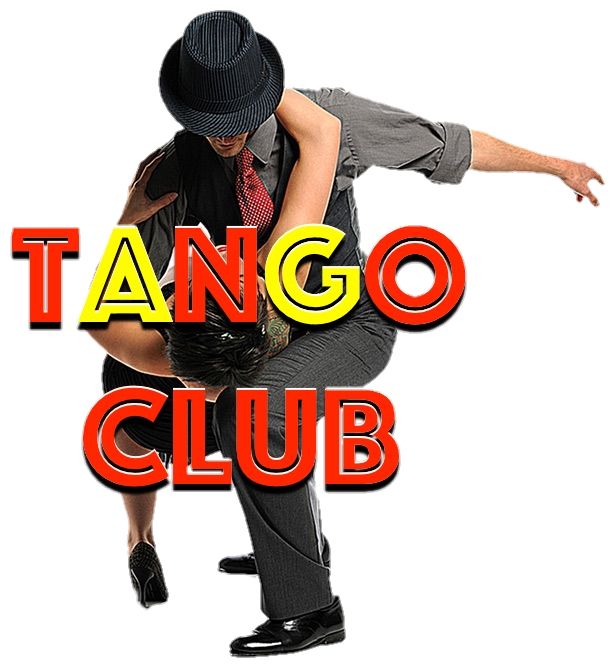Argentinische Walzermusik ist weniger dramatisch als die des Tangos. Die Tangostufen sind an den anmutigen Fluss dieses Rhythmus' angepasst. Der Schwerpunkt liegt im Erzeugen von weichen und gleitenden Bewegungen.
Milonga – ein fröhlicherer lebhafter Tanz, der zudem viel schneller ist. Er betont mit jedem Schritt einen Takt mit zusätzlicher Komplexität, auch auf den Offbeats. Dieser Tanz- und Musikstil war der Vorfahre des Tangos aus dem 19. Jahrhundert und ist in zeitgenössischen Tango-Salons noch immer beliebt.
Tango de Salón. Diese Art des Tanzens wird durch langsame gemessene Bewegungen mit allen grundlegenden Tangostufen und -figuren ausgeführt sowie einigen Sacadas, Giros und niedrigen Boleos, die alle mit Respekt auf den Partner und die anderen Tänzer im Raum vollzogen werden. Der Schwerpunkt liegt auf Präzision, Musikalität und Navigation. Dieser Tanzstil wurde in den 1940er Jahren in der Oberklasse und in Europa populär.
Argentine Waltz music is less dramatic than that of Tango. Tango steps are adapted to the graceful flow of that rhythm and the emphasis is on creating movements that are smooth and gliding.
Milonga — more a cheerful lively dance that is much faster. It emphasizes a step on each beat with added complexity, on the offbeats as well. This style of dancing and music was the ancestor of Tango in the 19th century and is still popular in contemporary Tango salons.
Tango de Salón. A way of dancing by slow measured moves, including all of the basic tango steps and figures plus a few Sacadas, Giros and low Boleos. It's performed with respect towards one's partner and the other dancers on the floor. The emphasis is on precision, musicality and navigation. This dancing style became popular in the 1940s among the upper classes and in Europe.
Milonga – ein fröhlicherer lebhafter Tanz, der zudem viel schneller ist. Er betont mit jedem Schritt einen Takt mit zusätzlicher Komplexität, auch auf den Offbeats. Dieser Tanz- und Musikstil war der Vorfahre des Tangos aus dem 19. Jahrhundert und ist in zeitgenössischen Tango-Salons noch immer beliebt.
Tango de Salón. Diese Art des Tanzens wird durch langsame gemessene Bewegungen mit allen grundlegenden Tangostufen und -figuren ausgeführt sowie einigen Sacadas, Giros und niedrigen Boleos, die alle mit Respekt auf den Partner und die anderen Tänzer im Raum vollzogen werden. Der Schwerpunkt liegt auf Präzision, Musikalität und Navigation. Dieser Tanzstil wurde in den 1940er Jahren in der Oberklasse und in Europa populär.
Argentine Waltz music is less dramatic than that of Tango. Tango steps are adapted to the graceful flow of that rhythm and the emphasis is on creating movements that are smooth and gliding.
Milonga — more a cheerful lively dance that is much faster. It emphasizes a step on each beat with added complexity, on the offbeats as well. This style of dancing and music was the ancestor of Tango in the 19th century and is still popular in contemporary Tango salons.
Tango de Salón. A way of dancing by slow measured moves, including all of the basic tango steps and figures plus a few Sacadas, Giros and low Boleos. It's performed with respect towards one's partner and the other dancers on the floor. The emphasis is on precision, musicality and navigation. This dancing style became popular in the 1940s among the upper classes and in Europe.
